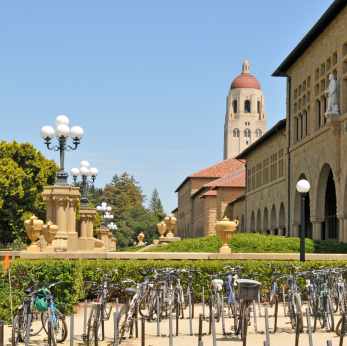Applying Cost-Benefit Analysis to Application for Scholarships and Grants for College
by Daniel Xu
(Albany, CA, USA)
There are plenty of resources available to high school students regarding scholarship and grants for college. I will not talk about the resources except provide the following link which I find very comprehensive: http://www.rose-hulman.edu/admissions-financial-aid/multicultural-recruitment/scholarships.aspx. The general advice to high school students looking for scholarships and grants for college is Apply, Apply, and Apply. There is nothing wrong in principle about this advice, and the only problem with this strategy is that it may not be cost-benefit effective. The reason is simple -- there are both benefit and cost involved in applying for a scholarship or grant. Only when the expected benefit exceeds the cost is it worthwhile to apply for the scholarship or grant.
The expected benefit of a given scholarship or grant is given by the probability or likelihood of winning the scholarship or grant times the expected award amount of the scholarship or grant, where the probability of winning the scholarship or grant can be computed as the ratio of the number of awards divided by the expected number of applicants. The expected award amount is the total amount of award divided by the number of awards. Consider, for example, a scholarship or grant with three awards, one at $3,000, one at $1,500, and one at $500, respectively. Suppose that there will be 500 applicants. The probability of winning the scholarship or grant is 3/500 = 0.6%, and expected award amount is $5,000/3 = $1,677. The expected benefit of applying for the scholarship or grant is $1,667*0.6% = $10. A moment’s reflection shows that the expected benefit is the ratio of total award to the expected number of applicants, independent of the number of awards.
A few remarks are in order for the concept and calculation of the expected benefit of a scholarship or grant. First, the expected number of applicants can be projected from the numbers of applicants from previous years. Second, one has to take account of the eligibility of the scholarship or grant. For example, for a need-based scholarship or grant, a student without financial need will have no likelihood to win it. Hence, the expected benefit will be zero.
The cost of applying for a scholarship and grant is the sum of the direct cost and indirect or opportunity cost. Nowadays, applications for most scholarships and grants can be sent electronically either online or by email. But applications for some scholarships or grants are required to be sent by regular, ‘snail’, mail. The cost of envelope and postage is the direct cost. The indirect or opportunity cost is the time one has to put to prepare for the application. One may well use this time to earn money from a part-time job; the forgone income is the opportunity cost. For some ’Easy’ Scholarships or grants, not much information is required, and one can readily finish them, incurring little opportunity cost. However, most applications for scholarships and grants require the applicant to prepare for a personal statement and one or several short essays, which can
Consider our earlier example. Assume that the one needs, say, 5 hours to finish the application and that the application can be submitted electronically and hence there is no direct cost of application. If the applicant can earn $8 per hour by working at McDonald, then the cost of the application is $8 * 5 = $40, higher than the expected benefit of $10. Thus, it is not cost-benefit effective or worthwhile to apply for the scholarship or grant.
There are more complications on the cost side. Many scholarships or grants for college require the applicants to submit two or three letters of recommendation from their teachers and high school counselors. A good letter of recommendation should be customized or tailored to the specifics of each application. Practically, one can only go to the letter writers and ask for letters for a limited number of times. This implies that one should confine oneself to applying for scholarships or grants with the highest net benefits of costs of application.
Cost-benefit analysis is an effective tool one can apply to the college scholarship or grant application process. A few practical tips based on the principle of cost-benefit analysis are as follows –
1. Start early: One should search for as many scholarships or grants as possible for which one is eligible to apply. This will afford one opportunities to identify scholarships or grants with the highest net benefits of costs.
2. Apply surely for the ‘easy’ scholarships or grants, such as lottery scholarships, which require little efforts or time.
3. Prioritize applications: Limit one’s attention only to scholarships or grants that have positive net benefits of costs. Then, try to apply for as many as possible from the limited set above, subject to other constraints such as the number of recommendation letters one feels comfortable to request from the letter writers.
Read more tips about available Scholarships and Grants for College from other students and parents who have been through process.
Comment from your friendly team at College Financial Aid Advice
Thank you Daniel for raising a very good point about Applying Cost-Benefit Analysis to Application for Scholarships and Grants for College. I like your approach and it would be great if more students used your system. Students should also check out the past winners (which are frequently posted on the websites), to see if the student’s qualifications or accomplishments are likely to place them in the winners circle. Good luck.
Finding Scholarships and Grants for College
Scholarship Money for College | Merit Based Scholarships | Easy Scholarships | Scholarship Contests | Scholarships for High School Seniors | College Scholarships for Women | Odd Scholarships | Scholarships for Minorities | Wacky Scholarships | Unusual Scholarships
Submit your essay in our College Essay Contest:
Apply Online Scholarship
Return to Share Your College Financial Aid Strategy.
Welcome!
Welcome to College Financial Aid Advice, a website full of information on scholarships and grants, student loans, and other ways to save money at college.
Important Things to Do
Scholarships for 2024 - 2025 - It is never too early or too late to work on your scholarship searches. If you are part of the high school class of 2024, you should work on your scholarship and college search now. See our list of Scholarships for High School Seniors
FAFSA - The official 2024 - 2025 FAFSA is available now. FAFSA.
College Financial Aid Tips
Scholarship Lists An overview of the different types of Scholarship Money for College.
Grants Learn more about grants, the other free money for college.
Need Tuition Help? Reduce the cost of tuition with these college Tuition Assistance Programs.
Tax Credit Claim the American Opportunity Tax Credit.
College Savings Plans Save money for college with these College Savings Plans.
Need a Student Loan? Yes, you qualify for these college Student Loans.
Popular Scholarship Searches
Scholarships for High School Students


